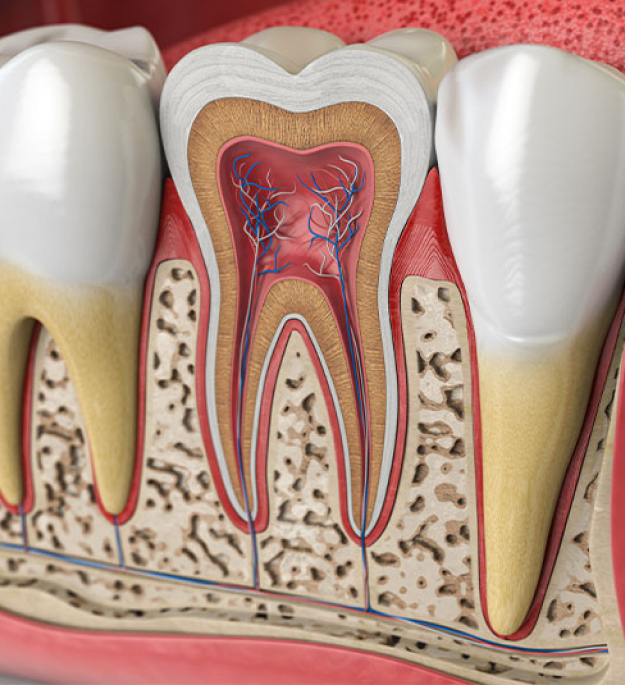8092 Edwin Raynor Blvd # D, Pasadena, MD 21122

Root Canal Treatment: Exploring Its Role
Every tooth is comprised of three distinct layers. The outermost and toughest layer is enamel, followed by dentin as the second layer. The innermost layer is the pulp, which contains the tooth's live tissue and nerve. If the pulp becomes exposed to external elements, it can become contaminated and infected. This exposure often occurs due to large cavities or fractured teeth. Your dentist can provide specific details regarding the cause of pulp damage. In such cases, root canal treatment is typically recommended.
Root canal treatment involves accessing the pulp space to remove infected or dead tissue. Once removed, the area is thoroughly disinfected and sealed using specialized materials. Modern advancements in techniques and materials have made root canal treatments more comfortable and efficient. Following treatment, your restorative dentist typically places a crown on the tooth to protect against fractures. In some cases, particularly complex ones, our dentist may recommend treatment by a root canal specialist to ensure optimal results.
Signs You Might Need Root Canal Treatment
- Persistent Severe Tooth Pain
- Jaw Discomfort or Swelling
- Extreme Tooth Sensitivity
- Pimple-Like Gum Swelling
- Red, Swollen Gums
- Unpleasant Taste or Odor in the Mouth
What Happens During a Root Canal?
New Patients & Emergency
Appointments Welcome!
New Patients & Emergency
Appointments Welcome!
